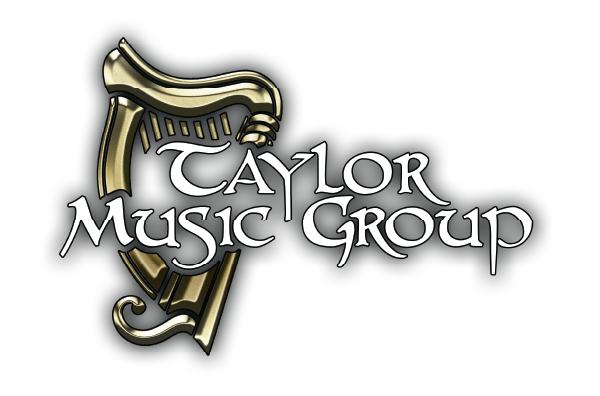Welcome to the 2025 ACDA Landing page!
Thank you for using our QR code, and welcome to the Taylor Festival Choir American Choral Directors Association 2025 National Conference performance landing page!!!
What an honor it is to perform at arguably the world’s greatest gathering of choral musicians. This is the fourth major conference performance for the TFC, and the honor seems to increase each and every time. To perform among so many great ensembles, in front of so many esteemed colleagues – it really is a dream come true each and every time.
From this page you can find links to all pertinent information about today’s performance, the Taylor Festival Choir, and its parent arts organization, the Taylor Music Group.
Program Notes
Our program begins with a contrasting pair of exuberant motets. The first is a setting of the “Jubilate” by TFC Composer-in-Residence Dr. Brian Galante. Motoric, jazz-influenced ostinati, neo medieval-meets-jazz harmony, and romantic-leaning melodies characterize Galante’s style, and are readily heard in this wonderful work. Several passages are in what Galante refers to as a “four and one half meter feel,” an idea that stems from Galante’s admiration for Jeff Coffin’s “The Mad Hatter Rides Again.” Fanfare magazine has described Brian’s music as “radiant, intelligent work.” We agree!!
“Jubilate” is immediately followed by one of our favorite motets, Johann Michael Bach’s “Sei, lieber Tag, willkommen.” Johann Michael Bach was first cousin once removed and father-in-law of Johann Sebastian Bach (he was the father of J.S. Bach's first wife Maria Barbara Bach). I have personally known this motet since singing it with John Erwin back in the mid-1980s at the University of Central Arkansas. It has always struck me as a simple, yet deceptively complex expression of joy and faith. I have spent two summers with my wife Mary at MD Anderson, and have been inspired by numerous cancer patients and their ability to embrace each moment of joy in life. During those times, the sounds of this motet always seemed to become my “inner musical mantra,” giving voice to the palpable feeling of optimism and hope that so many cling to even under the most intense adversity. It is extremely well-crafted, as one would expect from any member of the Bach family, with a mixture of virtuosic melismata and careful attention to the uplifting text.
Our next set presents a Kyrie and Gloria pairing stemming from William Byrd’s Mass for Four Voices and Roxanna Panufnik’s Westminster Mass. There is commonality and striking contrast in this pairing. Both composers are English, Catholic, deeply spiritual, and lived some 400 years apart. Byrd’s choral writing frequently showcases his brilliance as a writer of counterpoint and his ability to give expression to the deep faith combined with angst felt by “clandestine” Catholics in the Tudor era. This Kyrie expresses an appropriate feeling of prayerful serenity with a burnished, understated cry for mercy (or in this case, deliverance).. This serenity leads to the Gloria movement of Panufnik’s Westminster Mass– which begins with music that is soft, understated, and pregnant with rhythmic and harmonic tension that eventually erupts into music reflecting the awesome, powerful God who is the object of awe and devotion in the text of the Mass. Panufnik’s musical utterance is striking: one moment lyrical, one moment biting, the next meditative. Listeners familiar with the British classical canon will be reminded of Benjamin Britten more than once, though her overall musical voice is uniquely her own.
Our penultimate song is another work by a TFC Composer-in-Residence, in this case Dr. Chelsea Loew. Loew’s Hidden Love is a gorgeous setting of a wonderful Sara Teasdale poem. This music is akin to a dish by the finest chef––overtly delicious upon the initial “bite,” with a depth of flavor and subtle complexity that satisfies the (musical) palette at every level. Hidden Love is available on Dr. Loew’s website, and deserves exploration and performances by choirs ranging from the professional to fine high school ensembles.
We close with an arrangement that has been forming in my head for months, though it didn’t come to actual life on “paper” (iPad?!) until three weeks ago. It's an arrangement of one of my favorite Nickel Creek tunes, and is dedicated to my incredible wife Mary. Mary, like the protagonist of the song, also has a “destination”––in her case the achievement of remission––as she continues her ten-year dance with cancer. Mary is a world-class violinist and Irish fiddler, excelling in both classical and folk music. Her career has focused on finding creative ways to combine the two in performance and education. It's fitting that the “classical” choir she helped create and nurture would perform a folk arrangement that gives voice to the inspiration she has given me, my daughter, and literally thousands of audience members and students over her long Texas, Oklahoma, and Charleston, SC-based career.
